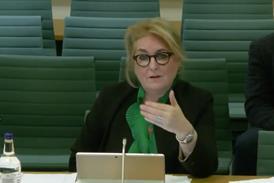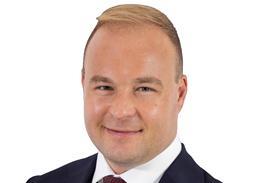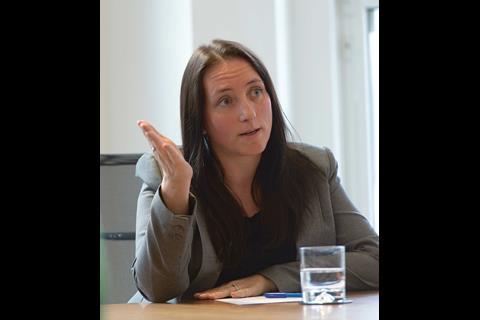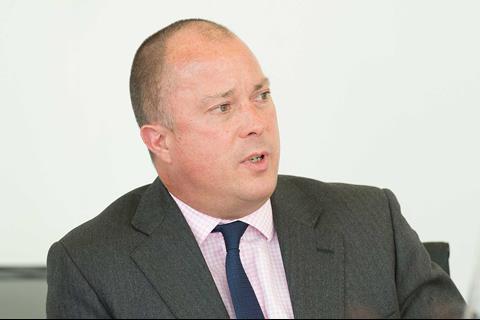The professional indemnity insurance market is likely to remain turbulent for some time to come, despite far-reaching reforms.
The market in solicitor professional indemnity insurance remains locked in a long ‘shakeout’, in which good legal practices continue to bear the cost of a diminishing number of firms with poor risk management.
There is a relative lack of meaningful competition between rated insurers, and financial institutions use their commercial power to insist that solicitors retain ‘bulletproof’ insurance – a process in which the Solicitors Regulation Authority is perceived effectively to collude. There is capacity in the market for well-run firms with a good story to tell. But even then, if they do conveyancing, those well-run firms must bear the weight of the financial institutions’ ability to externalise all risk.
These are some of the conclusions of the Gazette roundtable discussion on PII, which brought together underwriters, broker Howden Windsor and professional practice consultants with frontline experience of advising solicitors who face a claim.
The backdrop, of course, is getting on for a generation of uncertainty, reform and controversy in solicitors’ PII. The Solicitors Indemnity Fund (SIF), as was, found itself in serious danger of failure; and the cost of the assigned risks pool (ARP) challenged the insurance industry’s willingness to provide cover when the open market replaced SIF. Nevertheless, last year’s events still managed to shock.
As Howden Windsor’s John Wooldridge recalls: ‘Around this time of year, every year, there are a lot of people just positioning, reviewing their accounts, noting who’s coming in, who’s going out and who will be the significant market players. Last year was very unremarkable in that regard.’
All that was to change. ‘The first inkling we had that it was going to be a fairly turbulent year was in June, when Balva, one of the unrated carriers, withdrew from the market. That was the starting point, especially if you were one of the 1,500 law firms that were insured with them. That turbulence turned to absolute chaos when Berliner, another unrated insurer that came into the market to try and sweep up a lot of the Balva business, were prevented by the German regulator from taking part.’
As with the previous, disordered withdrawal from the market of Quinn and Lemma, the direct impact was mostly felt by the the one-to-four partner firms that formed the bedrock of their business. But following the high-profile collapse of larger law firms – such as Halliwells and Cobbetts – there emerged a danger of contagion, with sound legal practices finding their risk levels were assessed as higher when insurer confidence visibly waned.
To a degree, that happened. The process is not straightforward, but ultimately more than the 1,500 firms insured by Balva were affected.
Each case will be different, but as Wooldridge notes: ‘For firms with claims notified to unrated insurers, especially where there are questionmarks over whether those claims will be paid or not, that’s going to have a potentially dramatic impact on gaining [fresh] cover.’
More broadly, underwriter David Cable of Allianz notes: ‘I think the profession is a challenging class to write, whether you’re a one-partner or 25-partner firm.’ And while the ‘sub-four-partner’ practice tends to be regarded more negatively, he explains, ‘I don’t think one can generalise and say, if you’re a 25-partner-plus firm, suddenly you’re fantastic’.
Unusual suspects
The PII market for solicitors has distinctive features that add to its cost and instability, note several around the table.
Peter Court, who leads a team of 65 professional indemnity lawyers at Plexus Law, says: ‘When I first started to do solicitors’ work about 10 years ago and I saw a thing called the “qualifying insurers”, I assumed that insurers had to in some way “qualify”. That’s not really the case, is it? That’s where the problems come from – the fact that anyone, whether they’re rated or unrated, regardless of their ability, has been allowed to be an insurer of solicitors.’
The presence of unrated insurers is an anomaly among professionals, notes underwriter AmTrust’s head of professional indemnity Russell Newell: ‘Across the professional indemnity market as a whole, if you were to take solicitors out, I suspect there’s hardly any involvement of unrated insurers.’
Rules set by the SRA come in for particular criticism. A qualifying insurer has consented to extensive minimum ‘qualifying’ conditions set out by the SRA. The inflexibility of such terms clearly frustrates those seeking to broker or underwrite cover. As Cable puts it: ‘It’s just such a hard line to take – to say “you cannot change the minimum terms”.’
‘No one puts a gun to the insurers’ heads to write UK lawyers,’ another attendee observes. ‘They know what the minimum terms are. They’re not fantastic. They either have to price for it, or refrain from signing the bit of paper and not renew firms. The SRA could help themselves by listening to reasons why they should change the minimum terms.’
Qualifying terms aside, the SRA’s consultation on whether to block unrated insurers from ‘qualifying’ to write cover for solicitors ended on 24 March. QualitySolicitors’ Amy Bell, head of risk and compliance for the QS network, outlines the challenge firms face with regard to choosing an insurer.
Choices can be hard for well-run firms, she says: ‘People will say, “I’m looking at a rise of 15% or more in my premium if I have to do what the SRA tells me and choose a rated insurer – that’s my whole marketing budget gone”. The difficulty is actually getting the proper information about what the risk is to you of going with an unrated insurer. That’s the challenge.’
BLM’s Martin Jensen points to situations where the use of unrated insurers is seen as an interim measure: ‘I suppose it may be a short-term lifeline for firms who should be looking to move away from that, with a view to working with brokers who will present the risk profile of the firm in the best possible light, and look forward to getting on with a rated insurer in the next few years or shortly after.’
For those practices principally focused on cost, there are scenarios that can end up in higher expenditure, Bell says. ‘On the high street it’s been a very challenging economy, [with firms] looking at making people redundant, thinking “Do we go for this best possible quote and take a calculated risk?”
‘I do think some firms took that risk. Not because they were being blasé about whether they go with a rated insurer or not, but perhaps not necessarily appreciating the risk of what the consequences are. Now one sees firms which have claims with Balva being written to and told “you need to pay the legal fees because they’re not being paid”.’
Telling a story
The PII market for solicitors is problematic then, to say the least. But those present maintain that there is sufficient capacity for those firms able to present and explain a good case. There is frustration, though, around proposal forms – both with regard to their complexity (they can run to 40 pages) and the approach of some solicitors to filling them in.
Although the forms may be lengthy, Newell notes, they nevertheless encourage a box-ticking mentality among applicants which rather misses the point of the exercise. ‘They tend to be quite long and detailed, and what disappoints me is I think it almost “straitjackets” some firms into just filling in all the boxes. They forget that what they’re really trying to achieve is to tell us what they do.
‘I was trying to encourage all of our insureds or proposers to write us a short letter saying, “This is what we do. We are a practice in the high street doing probate, conveyancing, whatever. We’ve been going for 15 years. Our clients are in these sorts of areas” and some sort of narrative, almost, describing their firm. As an underwriter, you’re trying to get a picture of these people you’re insuring, and it’s really quite hard on a proposal form.’
Past problems need to be tackled head-on, Wooldridge and the underwriters advise. Insurers will want to know not only that someone responsible for a problem is no longer with the firm, but also that all files they worked on have been checked, and the role of their supervisor reviewed.
Robert Crossingham, of Weightmans’ professional risk team in London, interjects: ‘It’s quite common that [such] issues aren’t addressed, or the firm may not have broker assistance in preparing the presentation of the risk.’
Jeremy Riley, who heads a team of 17 professional negligence lawyers at Kennedys, agrees with Newell, describing proposal forms as ‘fairly glib, in some respects’.
He relates the experience of one client, who almost went under because of an inability to secure cover. At least half of the three-partner firm’s work was in the ‘high-risk’ area of conveyancing. Underwriter suspicion was a ‘massive frustration’, Riley notes, adding: ‘While at least half of their work was conveyancing, it was not staffed by the “lowest common denominator”. They were charging proper fees for work done by three partners and a couple of senior solicitors.’
Does some of that frustration arise from a ‘shakeout’ in the market – the ongoing, though diminished, presence of law firms who are struggling to stay in practice, but who (some argue) the market would be better off without? Attendees are reluctant to generalise. Each has encountered badly run firms and instances of fraud, along with good firms which have struggled to explain, and get cover that matches, their true risk profile.
One notes a perception that ‘it’s been left to the PII market rather than the SRA to police the industry. I don’t think it’s for the insurers to act as executioner to a lot of these struggling firms’.
At the table were:
Eduardo Reyes, Law Society Gazette; Peter Court, Plexus Law; Russell Newell, AmTrust; John Wooldridge, Howden Windsor; Robert Crossingham, Weightmans; Jeremy Riley, Kennedys; David Cable, Allianz; Martin Jensen, BLM; Amy Bell, QualitySolicitors
Others say that cost, and the risk borne by solicitors and their insurers, have much to do with the power of lenders in the high-risk conveyancing market. There is a ‘deep pockets’ problem.
As Crossingham puts it: ‘You’ve got institutional clients who are suing surveyors and solicitors, both of whom have got copper-bottomed insurance arrangements. They can see these professionals’ [insurance gets them] off the hook.’
Newell expands on the same point: ‘Large financial institutions could do their own conveyancing in-house quite easily, not necessarily for third parties, and they could do their own valuations in-house if they chose to.’ The reason they do not, others suggest, is to exploit the relevant professions, including surveyors. As one notes: ‘They take advantage of their commercial situation with very small firms who are prepared to work and go and do a valuation, or a conveyancing, for a low cost, and take all the liability [for the transaction].’
The need for run-off cover also represents cover in excess of the norm for other professions, an expense that is clearly resented.
Blind date
It was intended that the PII market would be improved by a move from single renewal date from 1 October 2013. The reasoning was that this would facilitate choice better suited to a firm’s financial planning needs, while removing the ‘bun fight’ occasioned by the single date and allowing communications with brokers and underwriters to be better considered, ‘calmer’ affairs.
Up to 30% of firms might move from the single renewal date, some suggested, given the choice. That didn’t happen. The figure was closer to 5%.
The freedom was appreciated by those who exploited it, says Bell. ‘I hear from some of my firms that they’re being approached with early renewal with an 18-month policy,’ she says. ‘That’s great for whoever they’re renewing with, because the market might be smaller; other insurers might be closed when they’re looking to get some more insurance.’
There is another business case, Bell adds: ‘Some firms think it’s quite attractive for them to “put it to bed” for 18 months. They can get on with building their business and don’t need to think about [it] come October.’
Wooldridge suspects some firms run shy of moving from a single date for less considered reasons. Smaller firms with claims issues, who are borderline insolvent, seem to prefer to be ‘“washed in on the tide” with other smaller firms. The last thing they want is to have somebody take hours to go over their proposal with a fine-tooth comb’.
Riley also recognises the scenario: ‘You will find occasions when people can slip under the radar… this rollercoaster ride [of the single renewal date] is a bit of a commercial failure.’
A desired lack of oversight comes at a price though, Wooldridge warns: ‘Those firms that had left it until the last minute were paying an awful lot more than they would have done had they renewed in June.’
Writing for the future
One of the professional risk lawyers is able to discern some progress in the operation of the PII market, noting: ‘The premium for the last year was something like £250m, which was still less than the last year of fixed fees. Although the insurance is much higher, we’ve seen firm turnovers increase over the last 14 years. I think it is working better.’
Court disgrees: ‘I don’t think it is working all that well. We’re paying more for our PII than any other profession. The other reason that makes me think it’s not working all that well is that two or three clients who I have a great deal of respect for, and who I’ve known for a very long time, have, over the last two or three years, pulled out of solicitor insurance because they just don’t think the market is working properly. I’m not saying I’d like to go to back to the days of the SIF. But with all the kerfuffle we had in 2013, I’m just a bit worried that it isn’t working all that well.’
Wooldridge shares some of Court’s concerns: ‘Blue-chip insurers who have withdrawn from the market have been around for hundreds of years. They are not fly-by-nights.’
‘The market is challenging for everyone,’ Cable observes, while noting that some insurers who have retrenched from the solicitor PII market could have dealt earlier with some of the issues that caused their withdrawal. And as Riley reminds everyone: ‘What’s really interesting is that the top three insurers this year all grew. XL withdrew, but QBE, Travelers and Zurich all increased market share.’
The market, though, remains highly uncertain. As a result, Riley concludes: ‘I see the renewal season start earlier every year. It’s a bit like Christmas really. It seems to kick off maybe in March.’
It is time already, then, for law firms to start focusing on this most unwelcome of sideshows to their fee-earning lives. But turbulence in the market is not likely to abate soon.
Since the roundtable convened, the SRA has revealed that it will consider cutting minimum levels of professional indemnity insurance cover, addressing the ‘fundamental’ argument that they are presently too high. ‘At its simplest,’ board chair Charles Plant wrote in last week’s Gazette, ‘if you are a sole practitioner with a modest turnover, undertaking relatively low-risk and low-value transactions, do your clients require the protection of PII cover of £2m, or £3m, especially given that the cost of the services they are purchasing will be higher as a result?’
Insurers won’t like it, but most Gazette readers would surely answer that question with an emphatic ‘no’.
Eduardo Reyes is Gazette features editor
- This roundtable was kindly sponsored by Howden Windsor

































2 Readers' comments